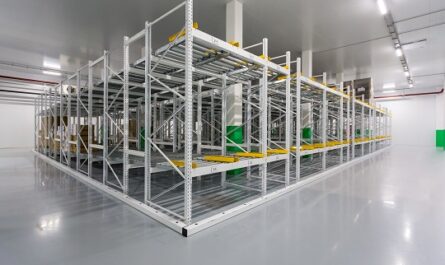Sales forecasting is crucial in the world of business, as it helps companies to plan their production and inventory needs in advance.
However, sometimes unexpected situations arise, such as sudden increases in demand that exceed previous forecasts.
This can be a double-edged sword, as while it presents opportunities for increased revenue, it also creates a challenge for businesses that have limited production capacity and material availability.
This blog post will discuss what can be done in such a situation, what can cause sudden increases in demand, what might be overlooked during forecasting, and what lessons can be learned from such situations.
Before we delve into this interesting topic, make sure that you have also joined the scmguide telegram channel to receive notifications on the latest posts from this blog and gain more insights on other aspects of supply chain management.
Table of Contents
What can be done?
When a sudden increase in sales demand occurs, businesses need to act quickly to meet the demand while maintaining their production capacity and material availability.
Below are some steps that can be taken:
- Prioritize production: The first step is to prioritize production based on the products that are in high demand. This means allocating the limited production capacity to the products that are most in demand to ensure that they are produced and delivered on time.
- Explore alternative suppliers: If the material required for production is not available from the regular supplier, it’s important to explore alternative suppliers who may have stock available.
- Increase production capacity: In the short term, businesses can increase production capacity by hiring additional staff, using overtime or shifting to multiple production shifts.
- Communicate with customers: It’s essential to communicate with customers about the situation and keep them informed of any delays or changes to their orders.
What can cause sudden increases in demand?
Sudden increases in demand can be caused by various factors, including:
- Seasonal demand: Some products are more in demand during specific seasons, such as winter clothing or summer footwear. A sudden change in weather patterns can cause an unexpected increase in demand for these products.
- Marketing campaigns: A well-executed marketing campaign can create a buzz around a product and lead to increased demand.
- Popularity: If a product becomes popular due to a celebrity endorsement or social media trend, demand can skyrocket.
- External events: External events such as a pandemic, natural disaster or political turmoil can cause a sudden increase in demand for certain products such as personal protective equipment (PPE) or emergency supplies.
You might also like:
- The Importance of a Balanced Approach to COGM and COGS Prioritization
- QC vs. Production Team: Who is Responsible for the Quality of Raw Materials Before Use?
- Creating a 5S Culture in the Supply Chain: The Best Way to Improve Productivity and Work Efficiency
What might be overlooked during forecasting?
While forecasting is important, some factors may be overlooked, leading to inaccurate predictions.

Some of these factors include:
- New product launches: If a new product is launched, it can be difficult to predict its demand accurately, as there is no historical data to go on.
- Changes in consumer behavior: Consumer behavior can change rapidly due to various factors such as new technology, economic conditions or external events.
- Competition: If a competitor launches a new product or offers a discount, it can affect the demand for your product.
- Natural disasters: Natural disasters can disrupt supply chains and lead to shortages or increased demand for certain products.
What can be done to meet increased demand in a short timeframe?
When faced with a sudden increase in demand that needs to be met in a short timeframe, some steps that can be taken are:
- Increase production capacity: As mentioned earlier, businesses can increase production capacity by hiring additional staff, using overtime or shifting to multiple production shifts.
- Prioritize production: Prioritizing production based on the products that are in high demand can ensure that they are produced and delivered on time.
- Optimize inventory management: Optimizing inventory management can help businesses to ensure that they have enough stock available to meet the sudden increase in demand.
- Collaborate with suppliers: Collaborating with suppliers can help businesses to access additional stock quickly and ensure that their production needs are met.
Lessons learned and how to avoid similar situations in the future
When faced with a sudden increase in demand, it’s important to analyze the situation and learn from it to avoid similar situations in the future.
Some lessons that can be learned are:
- Maintain a flexible production capacity: Businesses should maintain a flexible production capacity that can be increased or decreased based on demand. This can help them to meet sudden increases in demand without disrupting their regular production schedule.
- Monitor market trends: Monitoring market trends can help businesses to stay ahead of the curve and anticipate changes in demand.
- Collaborate with suppliers: Collaborating with suppliers can help businesses to access additional stock quickly and ensure that their production needs are met.
- Use technology to improve forecasting accuracy: Businesses can use technology such as AI and machine learning to improve their forecasting accuracy and better anticipate changes in demand.
- Maintain good communication with customers: Maintaining good communication with customers can help businesses to manage their expectations and keep them informed of any changes or delays.
Conclusion
Sudden increases in demand can be both an opportunity and a challenge for businesses.
While it presents an opportunity for increased revenue, it also creates a challenge for businesses that have limited production capacity and material availability.
To meet the sudden increase in demand, businesses need to act quickly, prioritize production, explore alternative suppliers, and communicate with customers.
By learning from such situations and taking steps to avoid them in the future, businesses can maintain their competitive edge and ensure their continued success.
Hope it useful!
Please share this article with your colleagues so that they can also benefit from it. Join the scmguide telegram channel to stay notified of the latest articles from this blog and for more insights on supply chain management. All articles on this blog are free for you to use for any purpose, including commercial use, without attribution.
 by
by 
